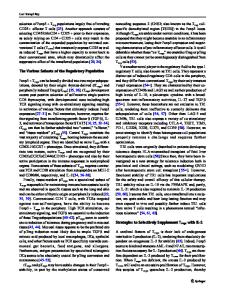Perovskite photovoltaics: David Mitzi addresses the promises and challenges
- PDF / 252,134 Bytes
- 2 Pages / 585 x 783 pts Page_size
- 42 Downloads / 335 Views
Energy Quarterly
Perovskite photovoltaics: David Mitzi addresses the promises and challenges Interviewed by Lynn Loo and Prachi Patel
Before joining Duke University as a professor of mechanical engineering and materials science in 2014, David Mitzi spent 24 years at IBM’s T.J. Watson Research Center developing new solution-processed electronic materials that outperform analogous conventional high-vacuum processed materials. There, he worked extensively on halide perovskite semiconductors before leading work on thin-film solar cells, including those made from earth-abundant elements copper, zinc, tin, sulfur, as well as selenium (CZTS). These solar cells were 12.6% efficient, representing almost a doubling of performance over the state of the art for this technology before the IBM breakthroughs. Mitzi is now busy expanding his laboratory at Duke, where his research group is pursuing low-cost, high-performance photovoltaic technologies based on chalcogenides such as CZTS and CIGS as well as on perovskites. His goals are to increase the efficiency and improve the stability of perovskite solar cells. Searching for new perovskite materials that do not contain toxic lead is also a top priority. He gave us his insights on the excitement behind perovskites and which key research areas need attention.
MRS BULLETIN: Perovskite solarcell efficiencies have gone from 3.8% in 2009 to over 20% in 2014. What has driven this rapid progress? DAVID MITZI: There are several reasons. First is the material itself. It has outstanding properties for photovoltaics (PV): a tunable bandgap in a range appropriate for the solar spectrum; a very high absorption coefficient so you can make the devices very thin; and relatively benign, shallow defects so you don’t have a lot of recombination and the device can have high open-circuit voltages. The second reason relates to where the field of solar is right now. Back in the 1970s, silicon solar cells cost on the order of $60 per watt. Nowadays, they’re approaching 50 cents per watt, getting to an exciting area where PV can get to grid parity, which is unprecedented. That, combined with the need to come
up with a clean energy source for environmental reasons, has put a lot of focus and research funding into PV. Finally, perovskites are tremendously easy to make with very little equipment and financial investment. Getting high performance isn’t easy, but it’s very easy to get started, enabling research groups to jump in and get moving quickly. How do perovskite solar cells compare with silicon and organics in terms of lifetime, cost, efficiency, and the environmental concerns associated with having lead in these materials? Perovskite PV materials offer remarkable processing flexibility. You can imagine setting up a roll-to-roll process that operates at very high throughput using solution-based near-ambient temperature processing, which is significant for ultralow cost. This is a step above and beyond where one can imagine getting
Lynn Loo, Princeton University, USA Prachi Patel, [email protected]
636
Data Loading...











